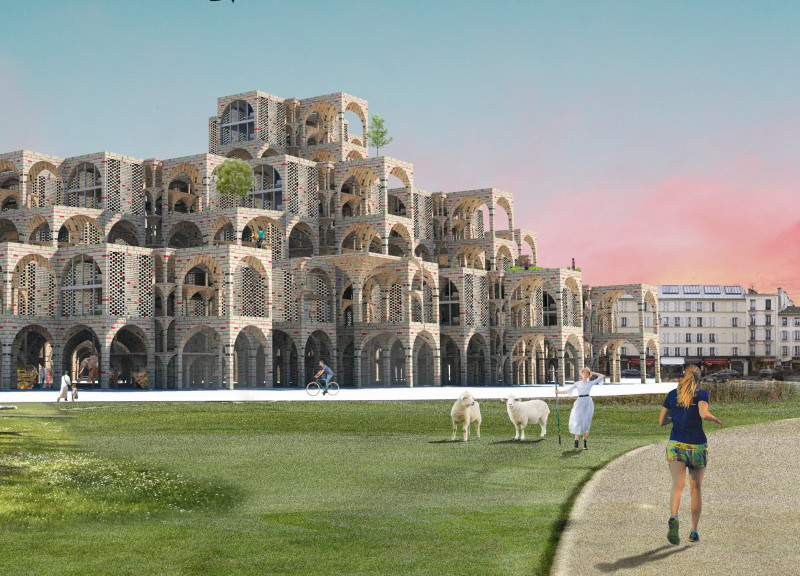5 key facts about this project
At its core, the project embodies the guiding principles of liberty, equality, and fraternity, which resonate deeply within the socio-political landscape of France. These ideals are translated into the design through concepts that emphasize inclusivity and accessibility. The building serves multiple functions, fostering a sense of belonging among its inhabitants while allowing for diverse uses ranging from residential to communal spaces. This multifaceted approach supports various community activities and interactions, making it a vibrant hub of urban life.
The distinctive architectural feature of the project lies in its striking series of brick arches. These arches are not simply structural elements; they create a narrative that speaks to both tradition and modernity. Their modular configuration offers adaptability, allowing spaces to be reconfigured according to the changing needs of residents. This flexibility is essential in addressing the dynamic lifestyle of urban dwellers. Each arch integrates nature into the living spaces, promoting natural ventilation and daylight, which enhances the quality of life and reduces reliance on artificial systems.
Materials play a critical role in the architectural design and sustainability of the project. The use of reinforced LEGO bricks is particularly noteworthy as it combines playful aesthetics with practical building capabilities. These modular units can be assembled and adjusted easily, providing an efficient solution for housing that also allows for community involvement in the construction process. The incorporation of bio-based materials, such as mycelium bricks and recycled construction elements, emphasizes an eco-friendly approach to urban design. This choice of materials ensures a reduction in carbon footprint while fostering self-sufficiency through features like green roofs and urban gardens.
Community spaces form an integral part of the design. These areas are designed to encourage interaction among residents, reflecting an understanding of the importance of social bonds in urban contexts. The project features multipurpose communal spaces that facilitate activities such as markets, cultural events, and recreational gatherings. These design strategies create an environment where residents can engage with one another, reinforcing community ties and enhancing social cohesion.
The innovative approach of integrating green spaces within the architectural framework allows for personal and communal gardens that enrich urban biodiversity while managing stormwater effectively. The focus on organic waste systems also resonates with sustainable living principles, enabling the residents to contribute to a closed-loop ecosystem. This commitment to environmental stewardship is apparent throughout the project, promoting a healthier urban lifestyle.
In summary, “Les Arches de l'Humanité” stands as a relevant example of modern architecture that not only addresses housing needs but also embraces social and ecological responsibility. It illustrates how thoughtful design can create harmonious living environments that promote community well-being and engagement alongside practical functionalities. For those interested in exploring this project further, it is beneficial to review the architectural plans, sections, and designs that delve into the intricacies of this concept and its vision for future urban living.


























